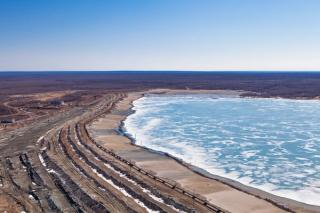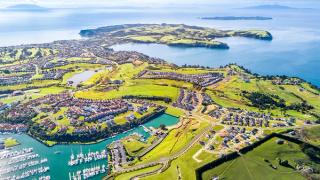
Changes to the proposed Australian Sustainability Reporting Standards – and what they mean for Australian businesses
- Post Date
- 27 June 2024
- Read Time
- 5 minutes

During the recent Australian Accounting Standards Board meeting[1], detailed discussions were held on the feedback received regarding [draft] Australian Sustainability Reporting Standards (ASRS) 1 General Requirements for Disclosure of Climate-related Financial Information, and [draft] ASRS 2 Climate-related Financial Disclosures exposed in Exposure Draft ED SR 1 Australian Sustainability Reporting Standards – Disclosure of Climate-related Financial Information[2].
As part of the meeting, the Board decided on the following updates for the upcoming standards:
- Preparation of Non-Mandatory Disclosure Statement: This will cover sustainability-related financial disclosures in line with International Financial Reporting Standards (IFRS) S1 – General Requirements for Disclosure of Sustainability-related Financial Information[3].
- Standalone Climate-Only Standard: Incorporate the necessary content from [draft] ASRS 1 to make ASRS 2 a standalone climate-only standard. Previously, the [draft] ASRS 1 reflected the content of IFRS S1 and it replaced all references to “Sustainability” with “Climate” to limit the scope of disclosure requirements. Furthermore, the [draft] ASRS 1 included the requirements relating to disclosures of governance, strategy, and risk management, and in the [draft] ASRS 2, it replaced duplicated content with Australian-specific paragraphs cross-referencing to corresponding sections in the [draft] ASRS 1.
- Alignment with IFRS S2: Ensure ASRS 2 aligns with IFRS S2 Climate-related Disclosures[4], especially regarding emissions calculation.
- Scope 3 Emissions: Require entities to disclose 15 categories of upstream and downstream emissions in line with the Greenhouse Gas (GHG) Protocol[5].
What do these changes mean for Australian businesses?
SLR welcomes the changes presented by the AASB Board. These updates will ensure comparability between local and international standards, allowing entities to leverage existing practices and processes.
Alignment of ASRS 1 to IFRS S1
The introduction of a non-mandatory ('voluntary') ASRS 1 standard, covering sustainability-related financial disclosures beyond just climate-related impacts, will broaden companies' perspectives on both climate and sustainability issues. By addressing these issues together, companies can build a more resilient and sustainable business, better meet stakeholder expectations, and contribute positively to global sustainability goals. Although ASRS 1 is voluntary, it will help companies to start preparing for integrated sustainability and climate-impact disclosures.
ASRS 2 as a Standalone Climate-Only Standard
Having a standalone, mandatory climate-only standard will provide specificity and clarity for entities. This approach allows for more targeted and effective implementation, clearer reporting, and helps entities manage and communicate their efforts in critical areas.
Alignment of ASRS 2 to IFRS S2
Aligning ASRS 2 with IFRS S2 Climate-related Disclosures will ensure greater comparability and allow entities to leverage existing practices and processes. It will also support subsidiaries of international companies in disclosing information aligned with global practices. Key changes include:
- GHG Emissions Measurement: Following the IFRS S2 hierarchy, entities can use methods other than the GHG Protocol if required by jurisdictional authorities or exchanges. This differs from ED SR1's proposal, which prioritises methodologies in National Greenhouse and Energy Reporting (NGER) Scheme legislation.
- CO2 Equivalent Conversion: Adopting IFRS S2 requirements to use Global Warming Potential (GWP) values from the latest Intergovernmental Panel on Climate Change (IPCC) assessment at the reporting date, rather than the IPCC 5th assessment in ED SR 1. Entities using pre-converted emission factors (e.g., Australian National Greenhouse Accounts Factors) do not need to recalculate using the latest IPCC GWP values.
- Market-Based Scope 2 GHG Emissions: Entities are not required to disclose market-based Scope 2 GHG emissions from the fourth year of ASRS 2 application. However, under IFRS S2 and ASRS 2, they may provide this information if useful for users or if future NGER Scheme legislation mandates it.
Scope 3 Assessment in line with the GHG Protocol
Entities will need to disclose Scope 3 emissions against the 15 categories of upstream and downstream emissions aligned with the GHG Protocol[5]. SLR believes this will enable comprehensive and transparent reporting of an entity’s value chain impacts.
Ensuring further alignment with global standards
The Board will address further aspects of the [draft] ASRS at future meetings, with the next one planned for June 26, 2024. Additionally, the Board has formed a subcommittee to assist in drafting ASRS 2 as a standalone standard.
With these proposed changes, SLR believes that Australian guidance will be further aligned with global standards, reducing additional reporting burdens and allowing organisations to leverage existing practices and processes.
For further information, contact James.
[2] Exposure Draft ED SR 1 Australian Sustainability Reporting Standards
[3] IFRS S1 – General Requirements for Disclosure of Sustainability-related Financial Information
[4] IFRS S2 Climate-related Disclosures
[5] GHG Protocol

